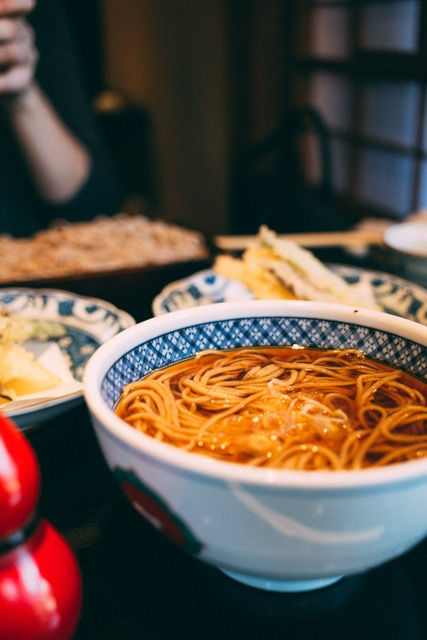OOdles of Asian Noodles
- Paul McClanahan

- Oct 6, 2019
- 3 min read
A few weeks ago my blog featured well-known American comfort foods. Some of the dishes had origins as early as the 1700s and have been enjoyed by generations since. Asian countries also have many dishes that were created to promote comfort and when it comes to longevity the Asian staple, noodles, have been around for over 2,000 years. Types of noodles are numerous and broken down into 4 categories including wheat, rice, and cellophane. Asian noodles dishes can be prepared in many ways: stir-fried, boiled, steamed or deep-fried. Of course, a flavorful broth is essential and these 5 will not disappoint when it comes to oodles of noodles choices.

Udon noodles are a product of Japan and have been a part of the Japanese food-scene since the 9th century when they were brought to Japan by a Buddhist priest named Kukai. They are a wheat flour noodle that can be served hot or cold. Traditionally they are served covered in a broth called kakejiru made by combining dashi, soy sauce, and mirin. I like to steep star anise and cinnamon in chicken broth. Then gently crack an egg over a bowl of hot noodles and carefully pour the hot broth over the noodles, poaching the egg. Garnish with sliced bok choy and green onions. Of course a dash or two of soy sauce is a must.
Ramen noodles are the most popular, most used Asian noodles worldwide. Ramen is a staple in the Japanese diet and have been since the 1660s when they were introduced to Japan by a Chinese scholar named Zhu Shunsui. Translated Ramen means "pulled noodles" of which they are. Hand made from wheat flour the technique used to create them is a work of art. While visiting China I was mesmerized watching a Master Chef create many strands. To make your broth heat stock, dashi, and soy sauce. Top a bowl full of noodles with fresh spinach, bamboo shoots, and shredded chicken. Cover with the broth and garnish a halved hard-boiled egg and green onions.

Thai cuisine uses many types of noodles and cellophane noodles are one of the most widely used. Known as fensi their roots are Chinese. Cellophane noodles are also known as glass noodles because of their transparent texture achieved after heating. They are very starchy since they are made with potatoes or tapioca making them very durable. Perfect for dishes with high heat and lots of ingredients. To your broth add lemon & lime zest, ginger, garlic, fish sauce. Let it all simmer for 1 hour adding coconut milk and sliced mushrooms halfway through. Place broth in a wok and add the noodles. At the boil add raw shrimp. Serve garnished with cilantro and sliced Thai chilis.
Pho is a dish created using banh pho a Vietnamese rice noodle. Originating in the early 1900s in Northern Vietnam pho has surged in popularity, especially in the U.S. due to the influx of refugees after the Vietnam War. Pho broth is big in flavor due to the number of spices, beef bones, and patience needed to develop the broth. Oxtails are traditionally the cut of meat used to make the stock. Once the stock is made add star anise, cloves, coriander, and cinnamon. Once the spices release their aroma add rinsed charred onion and ginger. Garnish noodles with your favorite, vegetables, meat, mushrooms, fresh lime, and cilantro.

Acorn noodles represent Korean dishes very well. The noodles are made from acorns gathered from the red or white oak trees in the country. Ogam village in Korea has bragging rights to the origin, also harvesting more acorns than anywhere else in the nation. Nutty, slightly sweet, and chewy are flavors that best describe this unique food source. They serve up cold as well making them great for Asian salads. Acorn noodle, sesame, and carrot salad is simple to make, healthy, and delicious. Whisk together soy sauce, sesame oil, rice wine vinegar, a dash of sugar, and toasted sesame seeds. Toss shaved carrots, scallions, and noodles in the dressing. Jeulgyeo!
As the days in Las Vegas grow shorter and the weather gets cooler, my desire for hot foods with full flavor grows and noodle bowls fill the bill. What I especially love about Asian noodle bowls, apart from the number of foods to adorn them, is that you're not locked into any rules. One type of noodle doesn't have to be paired with one broth. Mixing is highly encouraged in my kitchen and I have never had an outcome that I didn't enjoy. Asian and Italian cuisines are by far my favorite and in the Las Vegas valley, there is an endless number of choices to eat. Occasionally, I prefer to spend my day committing to the labor of love required to make a great bowl at home.



Comments